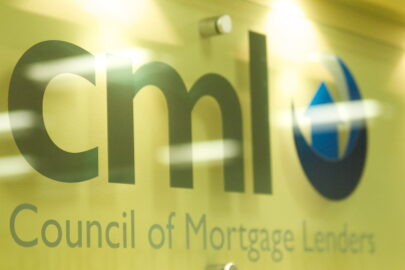The Council of Mortgage Lenders (CML) has revealed that home-owners borrowed £8.4bn for house purchase, down 25% month-on-month but up 12% year-on-year. They took out 46,200 loans, down 27% on December but up 5% on January 2015.
First-time buyers borrowed £3.3bn in January, down 27% on December but up 14% on January last year. This totalled 21,400 loans, down 28% month-on-month but up 6% year-on-year.
Meanwhile, home movers borrowed £5.1bn, down 24% on December but up 11% compared to a year ago. This totalled 24,800 loans, down 26% month-on-month but up 3% on January 2015.
Home-owner remortgagors borrowed £5.8bn, up 35% on December and 32% compared to a year ago. This totalled 33,100 loans, up 28% month-on-month and 19% compared to a year ago.
In addition, landlords borrowed £3.7bn in January, up 9% month-on-month and 42% year-on-year. This came to 23,100 loans in total, of which 13,400 were for remortgage, up 3% compared to December and up 31% compared to January 2015.
Paul Smee, director general of the CML, said: “We are now pleased to be able to analyse monthly lending on a seasonally adjusted basis. While the unadjusted data appears to show large falls in January compared to December, stripping out the usual January lull we see a general picture of flat house purchase lending but a significant uptick in remortgage activity, as borrowers continue to seek attractive new deals despite the lower-for-longer expectations for interest rates.”
In line with the expected seasonal dip in activity, the number of first-time buyers was at its lowest monthly level since February 2015. Looking through seasonal factors, lending was flat in January, compared to December 2015. However, affordability was slightly improved this month with average loan sizes and loan-to-income multiples decreasing compared to December. The proportion of income first-time buyers are committing to capital and interest repayments remained at its lowest level since records began in 2005.
Home mover activity was also affected by the seasonal lull, with January experiencing the lowest number of home mover loans advanced for house purchase since February 2015. However, average loan size decreased and average household income increased month-on-month, meaning income multiples decreased for home movers and the percentage of monthly household income spent to service capital and interest repayments also decreased.
In contrast to house purchase lending, remortgage lending to home-owners saw substantial increases month-on-month (and year-on-year), resulting in the highest lending borrowed in a single month for remortgage in the UK since January 2009.
“Despite a seasonal adjustment, it is encouraging to see a strong year-on-year growth across all types of lending, from purchases to remortgaging and buy-to-let,” said Steve Griffiths, head of sales and distribution at Kensington.
“However, it is crucial that the industry makes sure that any rise in lending is not limited to the top bracket of borrowers. Lenders must recognise the real life circumstances of many borrowers, whether they are self-employed, contracted or have had a ‘credit hiccup’ in the past.
“If we are to ensure a healthy mortgage market for the future, we must continue to cater for a broad range of customers, and we need to make it clear that we are open for business for credit worthy customers whose circumstances may not fit a standard mould.”
The number of loans for buy-to-let house purchase dipped in January compared to December. However, the value of total buy-to-let lending increased due to continually strong buy-to-let remortgage activity. The number of buy-to-let remortgages in January was at the highest monthly level since we began tracking monthly buy-to-let lending in January 2013.
David Whittaker, managing director of Mortgages for Businesses, said: “The buy-to-let market is continuing to gain steam ahead of 1st April Stamp Duty hike. Given it takes six to eight weeks on average to process a mortgage application, January and early February represented the last chance saloon for those landlords seeking to beat the surcharge. But equally, the strong annual growth in buy-to-let lending reflects the fact the we are not just seeing a flash-in-the-pan uptick. The sector continues to remain an attractive investment opportunity for those with the patience to wait for steady, long-term returns.
“Looking forward, we expect lending to calm in Q2, once the Stamp Duty change kicks in and the focus turns to restrictions on buy-to-let finance costs. It is this – rather than the SDLT – which will really change the way the sector operates, as the Government seeks to foster a more business-like tax environment for buy-to-let.”
